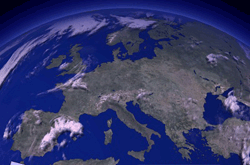Environmental Security Assessments: Methodologies and Practices


On 21-22 November 2010 the Institute for Environmental Security, in collaboration with UNEP and ENVSEC, organised a workshop on 'Environmental Security Assessments: Methodologies and Practices'.
The meeting brought together experts with experience in designing and carrying out ESAs and policy makers and practitioners with a demonstrated interest in using such assessments. The overall aim was to exchange information and experiences on the various approaches to conducting ESAs and explore ways to improve the use of them in the future.
The specific objectives were:
- To share approaches and experiences among those doing ESAs - which could help strengthen the quality and effectiveness of such assessments.
- To explore challenges and exchange ideas for improving end-user satisfaction with and utilisation of ESAs.
- To consider ideas for joint follow-up action by the participating organisations.
The first theme addressed was What are ESAs? How are they done? And who uses them? Speakers highlighted purposes of different kinds of ESAs and how they are used by policy makers, by companies, by development agencies and by the defence and security communities. Referring to NATO?s approach to Environmental Security, Jamie Patrick Shea, Deputy Assistant Secretary General, Emerging Security Challenges Division of the NATO said, "Environmental protection in military operations is a young discipline and it still needs tender parent-ship to mature."
A second theme focused upon the key elements of Environmental Security Assessments. For instance, how do ESAs deal with climate change issues, involve local stakeholders, take into account geopolitical aspects, engage different international and national actors and use earth observation, GIS and remote sensing. Laura Rio of UNEP spoke about ?the added value of ENVSEC that lays ultimately in its ability to bring interconnected environment and security benefits.? Other speakers in the session also emphasised the security angle and stressed the importance of conflict prevention.
During the third session, speakers shared experience and approaches which could help strengthen the quality and effectiveness of ESAs. Experts in this session unanimously agreed upon the importance of field work, that the assessments should meet the needs of the local context, that capacity-building of stakeholders was crucial, that the political context of key decision makers had to be taken into consideration and that cooperation and collaboration was imperative.
The final session focused on how ESAs can be made more useful to end users and dealt with ideas for follow-up and future cooperation. The participants agreed to continue to work together to exchange information on forthcoming ESAs and to help develop guidelines on how to carry out ESAs or how to use them.
Conference Materials
- Programme
- Themes and Discussion Points
- Participants
- Photos
- Presentations:
Session 1: Opening of the Workshop and Introductory Panel
- Bernard Snoy: Welcome by the Moderator
- Ronald A. Kingham: Introduction to the Workshop Aims and Programme
Part I: What are ESAs? How are they done? And who uses them?
- Tom Deligiannis: What are the Essential Elements of Environmental Security Assessments?
- Lukas Ruettinger: Environmental Security Assessments - Users, Needs and Challenges
- Marnix Becking: How can ESAs be used by Policy Makers and Development Practitioners?
Part II: What is the Defence and Security Community's Approach to Environmental Security?
- Jamie Patrick Shea: Environmental Security from NATO's Point of View, in Peace Time and During Operations
- Chad Briggs: How are ESAs used by the Defence and Security Community?
Session 2: Key Elements of Environmental Security Assessments
- Laura Rio: Geopolitcal Dimensions and Interagency Cooperation in ESAs: Central Asia
- Daniel Fiott: Energy Security and Climate Change: A Research Methodology
- Christina Stuhlberger: Mutli-stakeholder and Local Participation in ESAs
- Patrice Yamba: Mutli-stakeholder and Local Participation in ESAs; Congo Basin / DRC Case Study
- Ron Witt: The Use of GIS and Cartography in ESAs
- Patrice Yamba: Demonstration of IES Vision Interactve Map Viewer
Session 3: Lessons Learned from ESA Case Studies
Part I: Lessons from Comprehensive Environmental Security Assessments
- Marc Baltes:The ENVSEC Approach: Transforming Risks into Cooperation – An integrated, transboundary, regional, and multi-stakeholder framework
- Jeffrey Stark: The FESS Approach: Environmental Security Assessment: Focus, Issues, Lessons
- Wouter Veening: The IES Approach: Environmental Security for Poverty Alleviaton (ESPA) - Using Science, Diplomacy, Law, Finance and Education
Part II: Lessons from Environmental Assessments during Military and Peacemaking Operatons
- Christina Edlund: Environmental Vulnerability Assessments for Peace Operations
- Michele Righi: EUFOR / NATO's Environmental Management System in Bosnia & Herzegovina
Part III: Lessons from Post-Conflict and Disaster Management Assessments